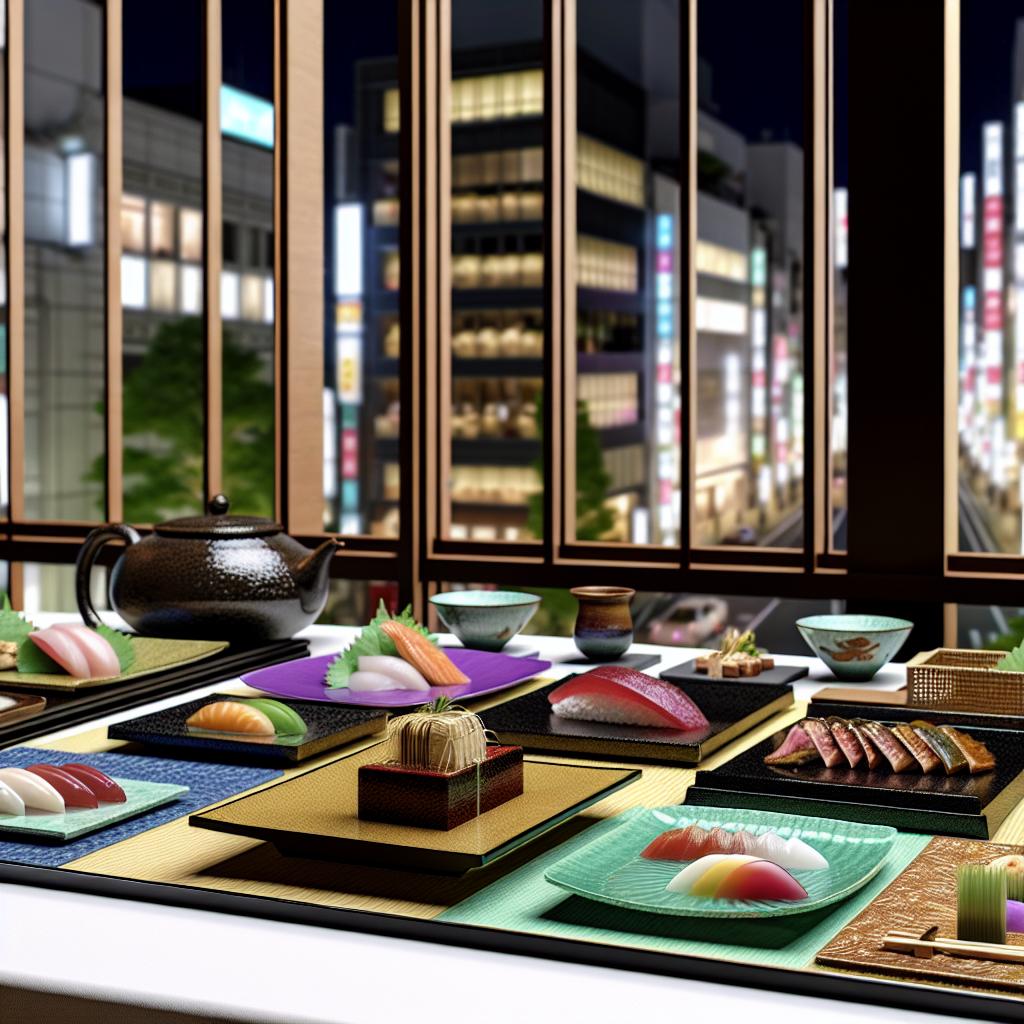Understanding Kaiseki Dining
Kaiseki dining is more than just a meal; it is an exploration of Japanese culinary philosophy. This traditional multi-course meal not only provides diners with a taste of Japan’s exquisite culinary art but also offers a journey through time and culture. With roots tracing back to the Japanese tea ceremonies of the 16th century, Kaiseki has undergone artistic transitions to become a celebrated facet of Japanese gastronomy today.
Through the centuries, Kaiseki has evolved from its simpler origins into two distinct styles: the formal Kaiseki-ryori associated with tea ceremonies, and Kyo-kaiseki, which is primarily served at high-end Japanese restaurants. The latter is what most people encounter in modern fine dining settings. Featuring a progression of dishes that highlight seasonal ingredients, Kaiseki represents a harmonious blend of taste, texture, appearance, and colors. Each course is meticulously prepared to enhance the natural flavors found in the ingredients, emphasizing a respect for nature and balance that is quintessentially Japanese.
Elements of a Kaiseki Meal
A traditional Kaiseki meal is crafted through multiple courses, each meticulously prepared to reflect the chef’s philosophy and culinary expertise. In bustling districts like Ginza, renowned for its exquisite dining experiences, the meal structure is designed to offer an unforgettable exploration of taste and aesthetics. While the specific courses may vary, a typical Kaiseki meal usually includes the following:
Appetizer (Sakizuke): The meal typically begins with a small dish similar to an amuse-bouche in Western dining. This course sets the tone, often introducing a key ingredient that might recur throughout the meal, establishing a thematic coherence.
Clear Soup (Suimono) or Steamed Dish (Mushimono): Highlighting seasonal flavors, this course often features delicate ingredients such as clear broth soups that cleanse the palate or tender steamed vegetables with subtle seasonings that showcase the chef’s restraint and skill.
Sashimi (Mukozuke): Fresh, delicate slices of raw fish, chosen for their supreme quality, are served with traditional accompaniments like soy sauce and wasabi. The character of this dish is understated yet impactful, reflecting the heart of raw, natural flavors.
Grilled Dish (Yakimono): This course might include fish or poultry, expertly grilled and flavored with miso or soy, demonstrating skill in preparation through a harmonious blend of smoky and savory notes.
Simmered Dish (Nimono): Vegetables and proteins are simmered gently in a seasoned broth, synthesizing gentle flavors and textures. This dish often serves as a warm, comforting interlude in the meal’s progression, embodying essential Japanese culinary values.
Kaiseki courses may also include other dishes such as a vinegar dish (Sunomono), a fried dish (Agemono), or a palate cleanser (Hashiyasume), each contributing an additional facet to the meal’s overall narrative.
Seasonality and Presentation
In Kaiseki, the ebb and flow of seasons play a pivotal role in choosing ingredients. Chefs, especially those in Ginza’s elite dining scenes, are devoted to sourcing ingredients at the peak of freshness — ensuring that each dish is a reflection of the particular time of year. For instance, the vibrant colors and flavors of spring might be highlighted through cherry blossoms and fresh shoots, while autumn dishes could present earthy tones with mushrooms and roasted chestnuts.
Presentation in Kaiseki is not merely about aesthetics; it is about connecting with nature. Each plate is arranged meticulously to form an enthralling visual story that allows diners to experience the visual beauty of Japan’s landscapes on their plates. The use of traditional ceramic and lacquer ware, sometimes designed to enhance the theme of the season or dish, further enhances this experience and transforms dining into a means of storytelling.
Where to Experience Kaiseki in Ginza
Ginza, a prime area renowned for its luxurious shopping and gourmet dining, is an exceptional destination for those eager to indulge in the Kaiseki tradition. High-caliber restaurants in this area are helmed by chefs who are not only skilled in their craft but have a profound respect for the history and artistry of Kaiseki. Here, an evening spent dining is transformed into a carefully orchestrated performance of taste, sight, and cultural immersion.
One notable venue is Ginza Chikuyotei, where each dish is a testament to the chef’s dedication to detail and the use of the freshest seasonal ingredients. Dining at such establishments is not just about the food but is an opportunity to witness the embodiment of Japanese hospitality, or omotenashi, where every aspect of service is devoted to anticipating and accommodating the needs of the guest.
Conclusion
To partake in a Kaiseki meal, especially in a prestigious district like Ginza, is to engage with more than a culinary activity; it is an encounter with centuries-old traditions that fuse cultural artistry with gourmet excellence. Kaiseki thus transcends the boundaries of a mere dining experience, inviting diners to witness a celebration of the seasons through an array of flavors and textures. For visitors seeking to deepen their understanding of Japanese culinary heritage, Kaiseki dining stands as both a feast for the senses and a subtle narration of the natural world’s perpetual rhythm.

